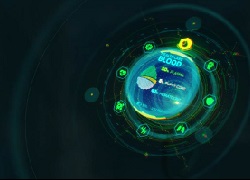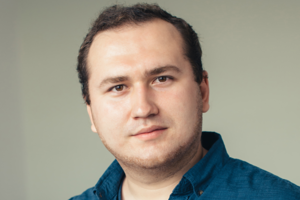The future of healthcare: Part 1 How IoT’s magic is reshaping our lives

Since the dawn of time, people have believed in magic. Myths and legends have been told about lamps with genies, talking mirrors, flying carpets, and other magical objects able to give their owners extraordinary powers. In the human imagination, a simple, mundane thing could be given supernatural features and turned into a multi-purpose tool with both regular and magical functions.
Back in the day, says Sergiy Seletskyi, IoT practice leader and senior solution architect at Intellias, little did our ancestors know that what was part of an imaginary world would become part of everyday life in the future.
The internet of magical things
Throughout the ages, humankind’s thirst for the miraculous has intensified and got people fixated on bringing their boldest fantasies to life. It’s the power of Internet of Things (IoT) technology that has finally taken us from dream to reality. We can now experience the magic of connected things around us working without the help of wizards or fairies.
Isn’t it a wonder when the door in front of you opens by itself, your vacuum cleans your house from top to bottom while you’re away, or your fitness tracker reminds you that you haven’t been active enough throughout the day and it’s time to stretch your legs?
The Internet of Things turns the ordinary into the extraordinary by bringing digital intelligence to everyday devices and enabling them to think, understand, and communicate with people and each other. As Arthur C. Clarke once aptly put it, “any sufficiently advanced technology is indistinguishable from magic.” Nothing does more justice to this statement than the prowess of IoT technology.
From chasing eternity to navigating the future of healthcare
Even more than magic, another idea has always been on people’s minds: immortality. From the desire to leave a mark in history to the dream of physically immortalising the human body, humankind has been looking for ways to achieve everlasting life. Some powerful individuals have attempted to extend their lives. Remember the rumours of David Rockefeller’s seven heart transplants?
True or not, one fact is certain: though no one can live forever, pushing the boundaries of the human lifespan has been one of the major achievements of humanity, resulting in longer life expectancy and a higher quality of life. To a large extent, this is thanks to the use of innovative technologies, which remains one of the most promising trends in healthcare and continues to produce a significant impact on enhancing medicine to increase human longevity.
Emerging Internet of Medical Things (IoMT) technology is bringing new ways to deliver fast and efficient patient care. The benefits of IoMT are many, but these are its most compelling uses that will shape the future of healthcare technology:
· Remote patient monitoring (RPM)
With the arrival of IoMT, the healthcare industry has received tremendous opportunities for continuous remote monitoring of patients’ conditions, providing timely responses to emerging symptoms and ensuring better treatment outcomes. The wide uptake of RPM solutions will allow healthcare services to process patient data and provide medical aid faster, manage resources more flexibly, and ease the pressure on frontline staff.
· Predictive and preventive telemedicine
IoMT has opened the door for effective predictive and preventive healthcare based on scanning patients’ vital signs and alerting patients and medical support staff about potential health issues. With the help of wearable devices and predictive algorithms, medical data can be collected and shared with a doctor who can spot changes or deviations from the norm in a patient’s condition and recommend treatment well in advance.
· Drone delivery
The growing use of unmanned aerial vehicles (UAVs) in medical supply chains may soon become the key to solving the problem of delivering medicine to remote places by cutting journey times from days to minutes. The testing of UAV technologies is in full gear: drones are already being used to deliver donor blood, vaccines, and medical supplies to rural areas in Rwanda and on the island of Vanuatu.
The pandemic boost

Sergiy Seletsky
The outbreak of COVID-19 was a massive shock to the traditional healthcare system, and as any shock, it has also been an immense catalyst for change. The pandemic has exposed the urgent need for more disruptive healthcare models, including remote personalised digital care.
With COVID positive numbers spiking and more and more people failing to receive the medical assistance they need, in some cases, digital healthcare is the only feasible option for saving lives. The digitalisation of the entire medical field will involve creating a resilient ecosystem of integrated remote monitoring and management tools for efficient telemedicine communication and secure data sharing. There’s still a long way to go, but we’re on the right track.
The author is Sergiy Seletskyi, IoT practice leader and senior solution architect at Intellias.
About the author
Sergiy helps companies harness the right IoT technology stack to scale business and make it future-proof. Strategic thinker with extensive knowledge of the IT Industry in a wide variety of innovative solutions for different business domains.
Comment on this article below or via Twitter @IoTGN
